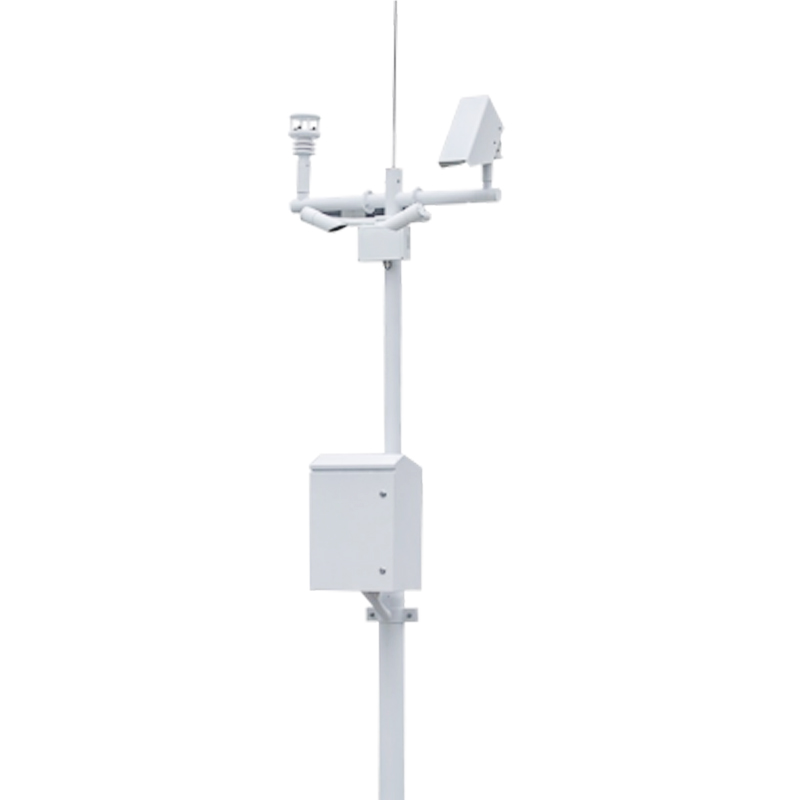Shandong Fengtu IOT Technology Co., Ltd
Sales Manager:Ms. Emily Wang
Cel,Whatsapp,Wechat:+86 15898932201
Email:info@fengtutec.com
Add:No. 155 Optoelectronic Industry Accelerator, Gaoxin District, Weifang, Shandong, China

Sales Manager:Ms. Emily Wang
Cel,Whatsapp,Wechat:+86 15898932201
Email:info@fengtutec.com
Add:No. 155 Optoelectronic Industry Accelerator, Gaoxin District, Weifang, Shandong, China
time:2024-09-10 17:23:13 source:Weather Station viewed:521 time
Aviation safety is closely linked to meteorological conditions. Every flight—whether it's takeoff, en route, or landing—is inevitably affected by the weather conditions. Accurate meteorological information is crucial for ensuring flight safety as it helps pilots and air traffic controllers make informed decisions. The timeliness, effectiveness, completeness, and accuracy of weather forecasts and real-time observation data play a decisive role in the safe flight of aircraft. Pilots rely on this information to avoid adverse weather conditions, such as thunderstorms, turbulence, and wind shear, thereby ensuring the safety of passengers and crew. Therefore, it is necessary to establish a comprehensive meteorological service network at airports.
Airport weather stations collect key weather parameters through multiple meteorological sensors deployed around the airport runway. These sensors monitor meteorological elements such as wind speed, wind direction, temperature, humidity, air pressure, and precipitation, and transmit the data to a central data processing unit. At the central unit, the collected data is analyzed and processed, then distributed in real-time to different user ends through a computer network system. This includes approach control, tower, meteorological forecasting, observation departments, airport command centers, and airline operations control centers. Such a system ensures that all relevant parties have access to the latest meteorological information, which plays a key role in flight operations, flight scheduling, and safety decision-making, enhancing the efficiency and safety of the entire aviation system.
Airport weather stations are responsible for tracking a series of key meteorological parameters that are crucial for aviation operations. The system monitors the following meteorological elements through a network of precise sensors:
Meteorological Optical Range (MOR): Measures atmospheric visibility, which is crucial for aircraft takeoff, landing, and taxiing.
Runway Visual Range (RVR): Provides the visual range on the runway, directly affecting the safety of aircraft takeoffs and landings.
Wind direction and speed: Changes in wind have a significant impact on flight paths and aircraft performance, and are key factors in flight planning and safety.
Air pressure: Measurement of air pressure is very important for adjusting flight altitude and meteorological analysis.
Temperature: Temperature affects air density, which in turn affects the lift of the aircraft and the performance of the engines.
Humidity: The level of humidity can affect the risk of aircraft icing and passenger comfort.
Precipitation: Precipitation conditions, including rain, snow, hail, etc., have a direct impact on flight safety and airport operations.
Clouds: The height, thickness, and type of clouds are very important for flight path planning and weather forecasting.

Atmospheric transmittance refers to the ratio of the luminous flux that passes through the atmosphere to the incident luminous flux when light propagates in the atmosphere. When the atmospheric transmittance is high, it means that more light can successfully propagate in the atmosphere. In this case...
Small weather stations, an affordable alternative to large weather observation equipment, are widely used because of their small size, low cost and ease of maintenance and management. It is more than enough to be used in those fields that do not require high accuracy, such as agricultural planting b...
The device is based on the principle of pressure-based measurement, whereby the height of the water surface is calculated by monitoring the change in the weight of the liquid in the evaporating dish, which in turn gives the amount of evaporation. This technique is applicable to a variety of environm...
Portable surface flow meter is a portable device designed for field open channel flow velocity and flow measurement by departments such as hydrological monitoring, agricultural irrigation, municipal drainage, and environmental protection. It calculates flow rate by directly measuring the surface velocity of water and is suitable for rapid on-site measurement in various scenarios, including natural rivers, channels, and pipeline outlets....